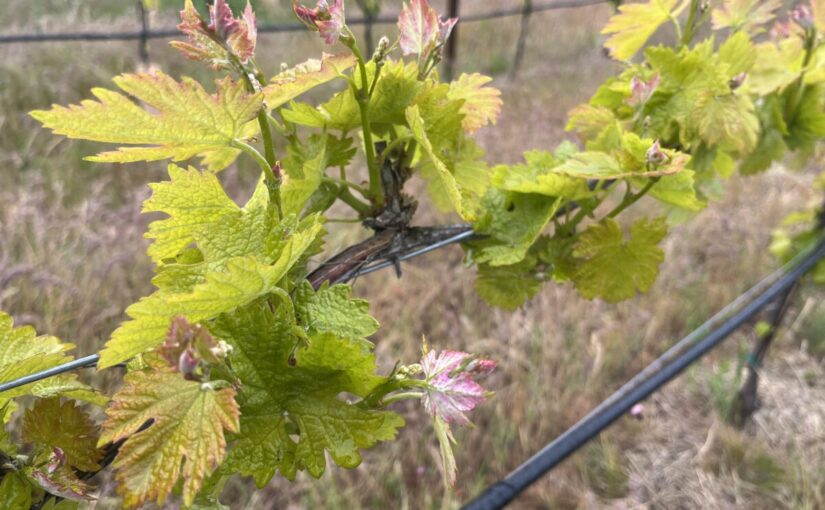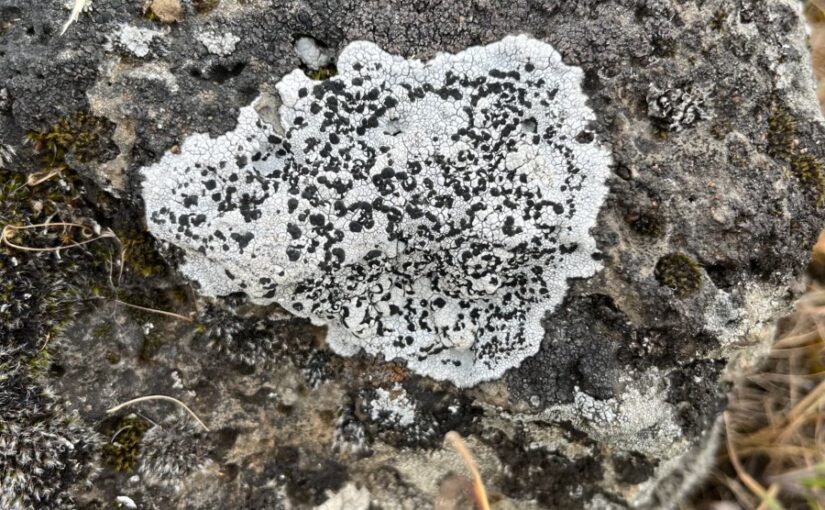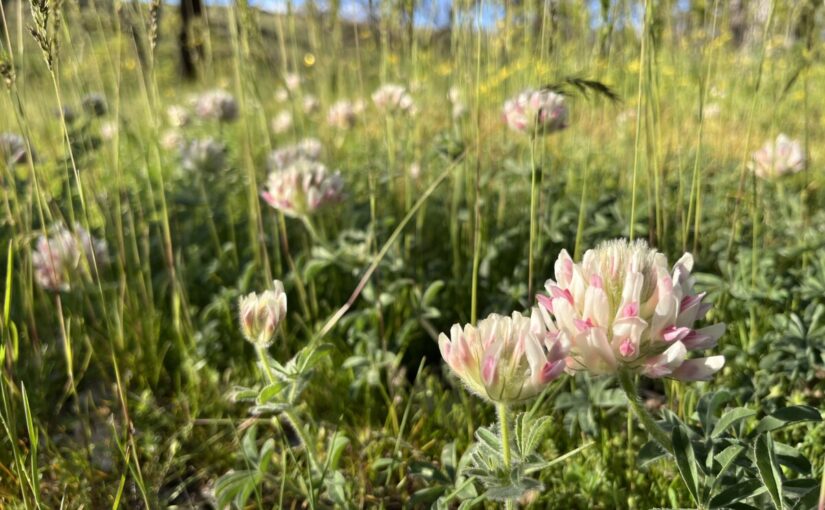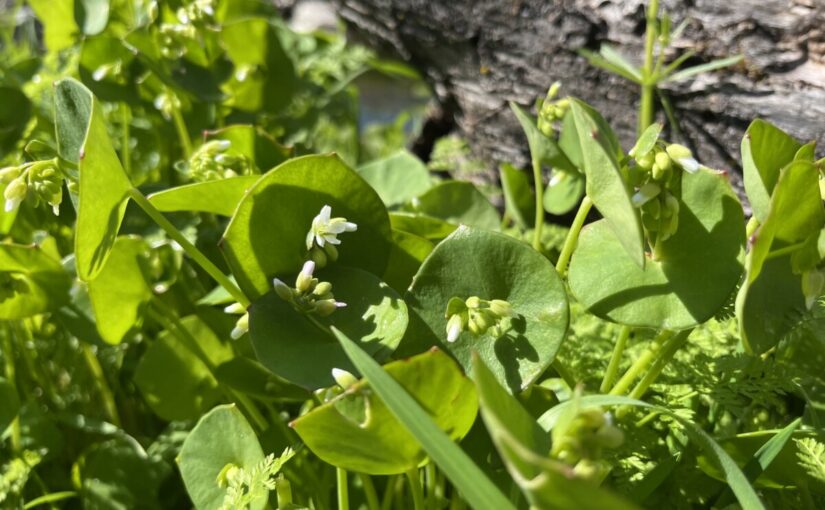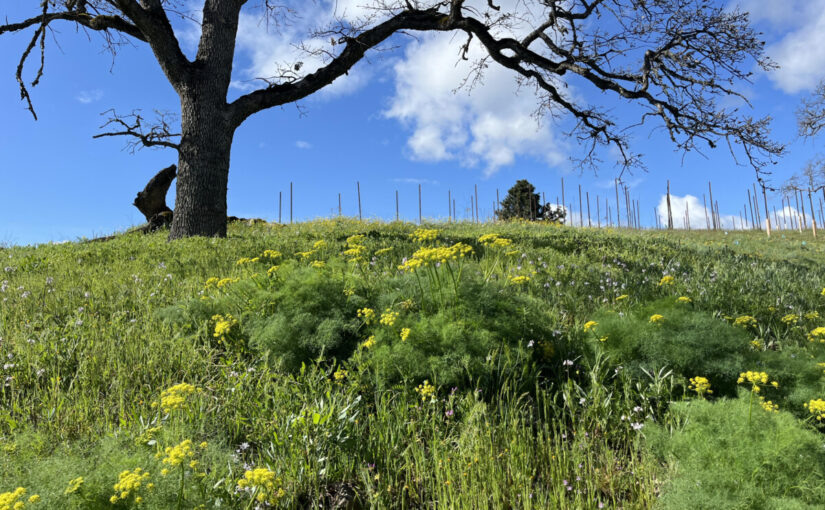This week’s work was brief to allow time to complete final projects. We started out the week by turning the compost. We then did some more weeding in the garden, anticipating our absence from the space for the rest of the year. After weeding we started to plant all of the starts we had purchased last week. Pole beans went in next to the peas and at the empty space on the end of that trellis. Herbs went in the same bed next to the strawberries and flower strip. Eggplant found their home planted between every pepper, Malabar spinach went in the trellis next to cucumbers, and the black currant was put in the raspberry cage along with the rhubarb.
On day two we checked the moisture meters, some of which had lower numbers than last time we checked, and some with much higher. The upper vineyard block of Syrah was showing tip burn and yellowing and had a much higher number than any other block. After this, we cleaned up the debris that had accumulated in the garden over the past few weeks of weeding and maintenance.
Readings
This weeks readings include three chapters. The first, “Farming Carbon” is mainly about carbon sequestration. The topics that are discussed in this chapter are no-till, cover cropping, carbon emissions and offsetting them, and lack of resilience in conventional agriculture. The author discusses the usual benefits of no-till and cover cropping, but frames them more with a focus on the carbon these practices can store. Montgomery explains how carbon is released from soil after tillage because of the acceleration of SOM decomposition, how chemical fertilization and conventional cereal production decreases soil carbon, and how no-till requires less passes with machinery which reduces fossil fuel use. Another section of this chapter discusses the possibilities of offsetting carbon emissions with regenerative agriculture saying “Rattan Lal conservatively estimates that worldwide adoption of all three elements of conservation agriculture could put enough carbon back into soils to offset 5 to 15 percent of global fossil-fuel emissions”. This idea creates a sense of hope, though I believe this cannot be the only solution. The author mentions this as well, saying these processes could only buy time before more environmentally friendly energy and economy practices are adopted (though his example is “green” energy, which in my opinion is not a viable solution as all of that energy is impossible without exploiting minerals and other materials from oppressed countries.)
The next chapter “Closing the Loop” is mainly about closed loop systems, centered around use of humanure. The author starts the chapter out with a history lesson on past scientists who “discovered” that plants needed nutrients and didn’t just eat decaying matter. The next section of the chapter is about use of humanure, starting with Asia in the early 1910’s. The author recounts an experience that Franklin H. King has seeing farmers in Korea, China, Hong Kong, and Japan return their waste (both kitchen and bathroom) to their fields. He discusses how many European countries and the U.S. lose so much of their soil nutrients through waste disposal rather than reuse. King also describes methods of interplanting, successional plantings, crop rotations, and use of N-fixing plants. All of these factors allow only a few small farms to feed many people, unlike in the United States. The next section of the chapter talks about TAGRO, the biosolid fertilizer produced by Tacoma’s waste processing facility. This shows the possibilities of recycling nutrients within a community and reducing environmental impact at the same time. For both the sections about biosolids, the author explains the importance of the composting or purification process required to insure a safe final product. In the traditional Asian method, the waste is composted and uses bacterial degradation to negate toxins or pathogens that could be in the waste. For TAGRO, the facility uses a pasteurization process to kill off microbes and pathogens, then the waste is further processed through aerobic and anaerobic digestion chambers to eat off the organic contaminants.
The final chapter “The Fifth Revolution” is a conclusion to the book, offering reflection and insights on the contents. Throughout the book, the author gives examples of conventional and organic, subsistence and commercial, local and national forms of agriculture with one thing in common. All of the farms are trying to approach farming from a perspective that had been suppressed and demonized by western society. I have had some issues with the book, primarily the lack of different perspectives aside from a western science standpoint. The book barely mentions the systems of oppression in place that have suppressed TEK across the globe, prioritizing the very scientific system that led to the destruction of the soils of Indigenous people everywhere. The book frames the ideas of national or global change through the lens of working within the bounds of the governmental structure. Policy changes and corporations “switching” to be more environmentally friendly are not what is needed for global liberation of the oppressive U.S. food regime. Greenwashing the entities that are actively degrading land, enacting genocide on historically oppressed peoples, and purely focused on profits and controlling populations will not change anything. As the book states “Unlike the fertilizer-intensive Green Revolution practices that developed top-down through government agencies and corporate research, conservation agriculture has largely evolved and spread through bottom-up farmer-led initiatives.” The movement for regenerative agriculture has potential to spur a local food/local economy movement. Shifting the source of our needs from global exploitation to your own community. Not only does this provide opportunity for closed loop cycles, reduced fuel usage, community health, and context based practices, it bolsters communities to be resilient and adaptable. This movement cannot be possible without colonizers listening to Indigenous peoples and working to make reparations. And, as liberation of one is not possible without the liberation of all, Indigenous food sovereignty should be at the forefront of these movements.
